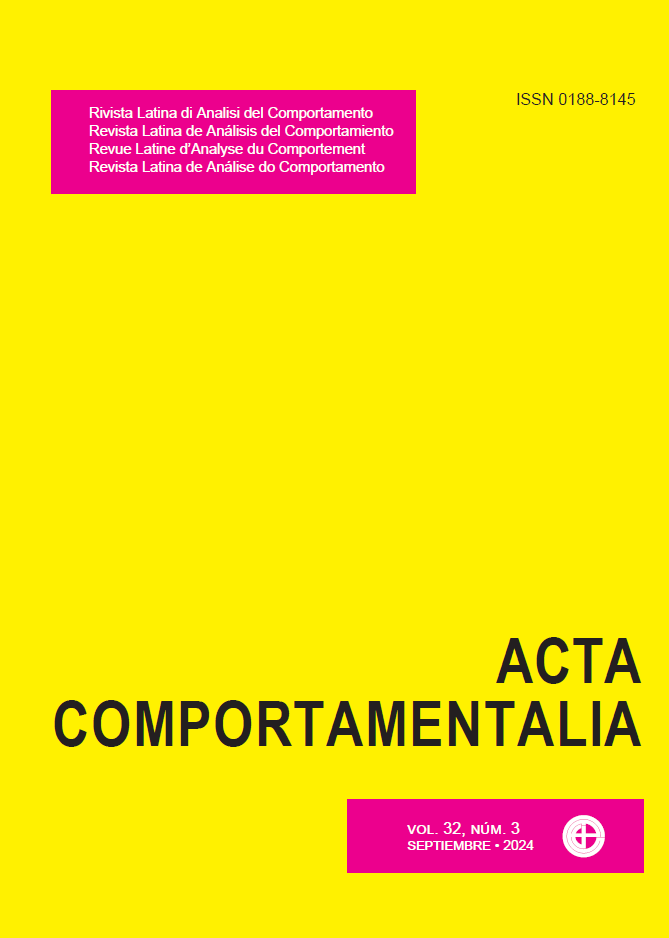The Feedback Function of Informative Messages With Regulated Specificity
DOI:
https://doi.org/10.32870/ac.v32i3.88366Keywords:
specificity, feedback, feedback function, matching-to-sample, learningAbstract
A specific situational configuration is composed of a stimulus situation (SS), which includes the physical arrangements of the objects, the number, type and physical location of objects, and the presence of clues in the situation, a response (R), which includes the achievement criterion, the main action to emit, the maneuvers that are required for the emission of the main action, other optional forms of responding, and the emotional state of the participant, and a consequence (C), which includes the frequency and modality if they are presented. Ortiz et al. (2008) propose a taxonomy to classify the elements of each component, which allows the analysis
of contact descriptions (i.e. pre-contact, post-contact, and informative messages). Any given description can be analyzed by the mention of each element, along with its relevance for the task, how specifically it is stated, and if it is accurate to the situation. After this analysis, descriptions from the participant or the experimenter can be cataloged as specific and pertinent (SP), generic and pertinent (GP), specific, but not pertinent (SNP), generic, but not pertinent (GNP), Irrelevant (A) or absent (A). With this, the messages that inform anything to the participant about their previous performance can be manipulated by following these components and elements. This study aimed to analyze the gradual effect of the specificity of the informative messages presented in a task, on the acquisition of the feedback function. Participants were exposed to a first-order matching-to-sample task with
continuous informative messages. The objects used in this task were geometric figures of different colors. The messages varied according to the combination of the components included (i.e. SS, R, C) and the order in which they were added and removed throughout the training. Similarly, participants periodically described the strategies they followed to solve the task. It was observed that the groups that started with specific messages showed optimal performances. On the contrary, the groups that started with generic messages showed different performances, while the best performances were achieved once the consequence (C) was included in the informative messages.
Downloads
Downloads
Published
How to Cite
Issue
Section
License

<a rel="license" href="http://creativecommons.org/licenses/by-nc-sa/4.0/"><img alt="Licencia de Creative Commons" style="border-width:0" src="https://i.creativecommons.org/l/by-nc-sa/4.0/88x31.png" /></a><br />Este obra está bajo una <a rel="license" href="http://creativecommons.org/licenses/by-nc-sa/4.0/">licencia de Creative Commons Reconocimiento-NoComercial-CompartirIgual 4.0 Internacional</a>.






